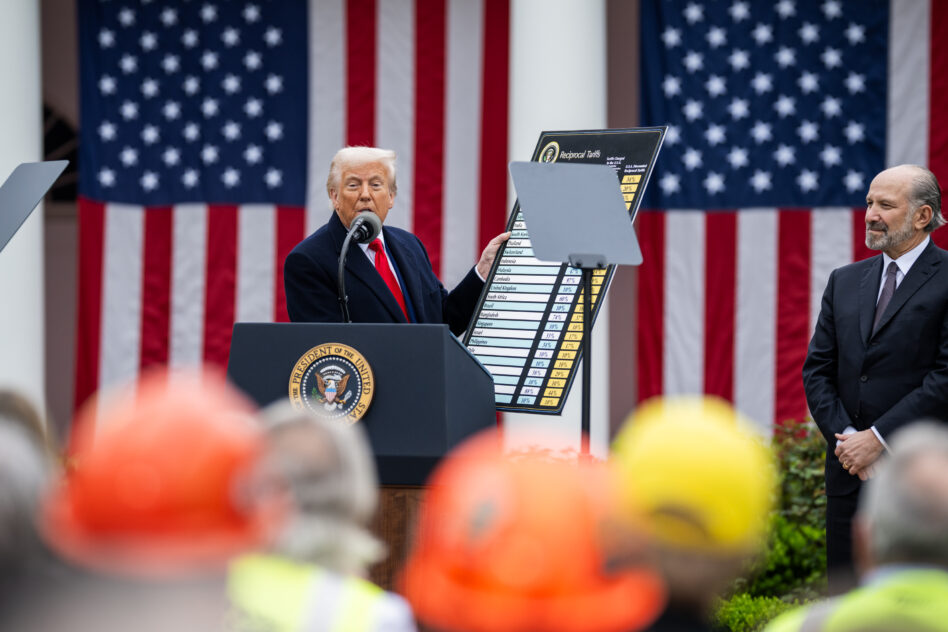For those of you who’ve taken a relaxing vacation under a rock for the past week: on April 2, Trump unveiled sweeping, massive tariffs on nearly all imports to the United States, sending markets into a tailspin.
Yesterday, Trump paused most of those tariffs for 90 days but maintained a general 10% tariff on all imports and imposed an insanely high 125% tariff on Chinese goods. Plus, 25% tariffs on steel and aluminum imports stayed in place.
But we’re all self-centered defense nerds here, so we had to ask the truly important question: How do tariffs impact the defense industry and cutting-edge tech?
Short answer: It ain’t good.
Sky high: Todd Harrison, a senior fellow at the American Enterprise Institute who studies the DoD and the defense industry, told Tectonic that, put simply, tariffs make the cost of defense production go up.
- Many of the things critical to building weapons systems, including metal, electronic components, and rare earth materials, come from overseas.
- Steel and aluminum tariffs are particularly problematic. “If it’s made of metal, it’s probably more expensive,” Dak Hardwick, VP of International Affairs at the Aerospace Industries Association (AIA), told Tectonic.
- It’s not a quick process to re-shore a lot of these inputs. Companies will be forced to pay the tariffs, at least in the short term.
- Maintenance costs will also go up—replacement parts will get more expensive, too.
- Harrison thinks that this will stifle both production and procurement.
“We’re just going to have to pay more in the short term,” he said. “When things are costing more, if the budget is not going up, we’re just going to buy less.”
Frenemies: There’s also the question of how allies respond. Countries that have agreed to buy American weapons systems might pull back on these purchases if tariffs stay in place.
“Why would countries we just slapped with tariffs buy the F35? There are other fighter jets they could buy,” Harrison said. If planned procurements are canceled, that means increased per-unit cost and likely job cuts in the US, he added.
This will hit smaller producers hardest, Harrison said. If you don’t have the cash reserves to pay for more expensive components, you could be screwed.
Hardwick said that these tariffs will hit defense companies immediately. “Companies that did not anticipate a change in tariff rate are likely to have to take money out of their normal day-to-day cash flow in order to pay the new tariff rate,” he said.
That could lead to tough business decisions, like cutting staff, decreasing R&D budget, or even lowering output. Figuring out tariffs also means a massive, massive increase in compliance costs, he added.
The only companies that will be spared, Hardwick said, are software companies that don’t need to import components. ($PLTR, for what it’s worth, was comparatively unscathed by the past week’s market turmoil and is up 22% on the year.)
Cross purposes: Harrison said that tariffs work against the Trump administration’s stated goals.
“The tariffs are working in opposition to a lot of what the administration was talking about to help the defense industrial base and to make procurements for competitive and efficient,” he said. “This does not seem to be part of any coherent strategy.”
They’re also likely to alienate foreign customers and could push European allies, in particular, closer to China.

